Plants are often seen as stable and predictable, but nature has a way of throwing surprises our way. Some rare plants phenomena challenge everything we think we know about botany, from bizarre adaptations to mysterious behaviors. These extraordinary creatures push the boundaries of scientific understanding, showcasing nature’s creativity in ways that leave even experienced botanists scratching their heads. In this article, we explore rare and unusual plant phenomena that continue to fascinate and confound researchers around the world.
The Ghost Orchid (Dendrophylax lindenii)
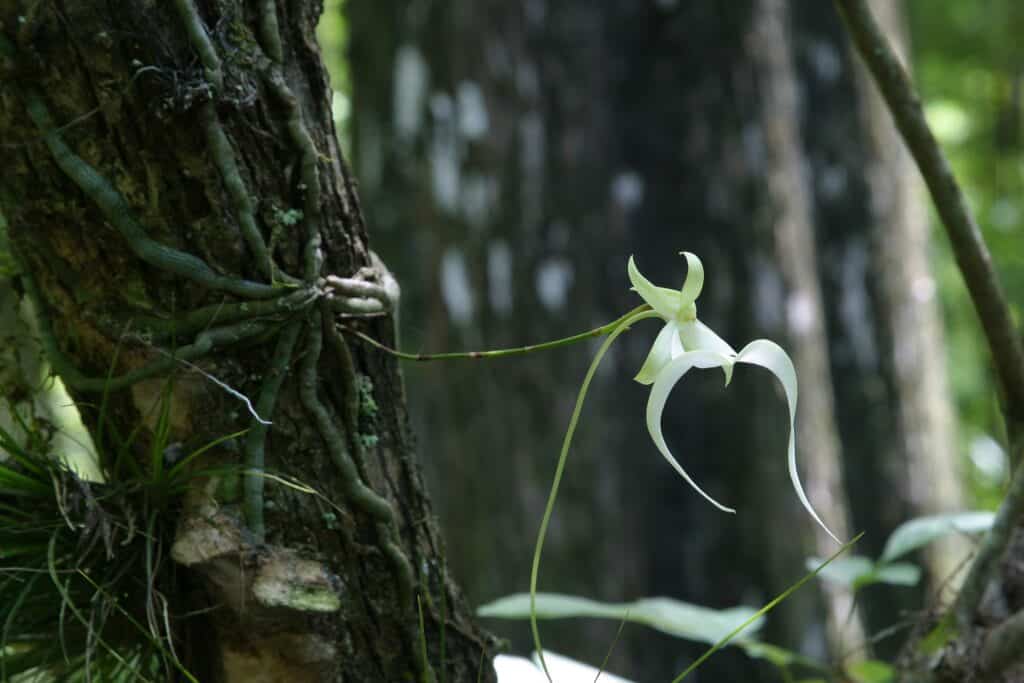
The Ghost Orchid, Dendrophylax lindenii, is one of the most elusive and rare plants in the world. Known for its striking, ethereal white blooms that resemble a floating apparition, it has baffled botanists for years. It is native to the humid swamps and hardwood forests of Florida and parts of the Caribbean, but due to habitat destruction and poaching, it has become incredibly rare. In fact, it’s so scarce that there are only a few hundred left in the wild. It is known to only bloom for a short period, making it even harder to study. Its ghostly flowers don’t have any petals, which is an unusual trait for orchids, making its pollination mechanisms a mystery for botanists. It is primarily pollinated by a specific species of moth, Cocytius antaeus, which has an unusually long proboscis that reaches into the flower’s deep structure to access its nectar. New research is being conducted to understand how to replicate its rare blooming conditions in controlled environments. Despite its difficulty in cultivation, some botanical gardens have managed to grow the plant, but its survival rate in cultivation is still low.
The Titan Arum (Amorphophallus titanum)
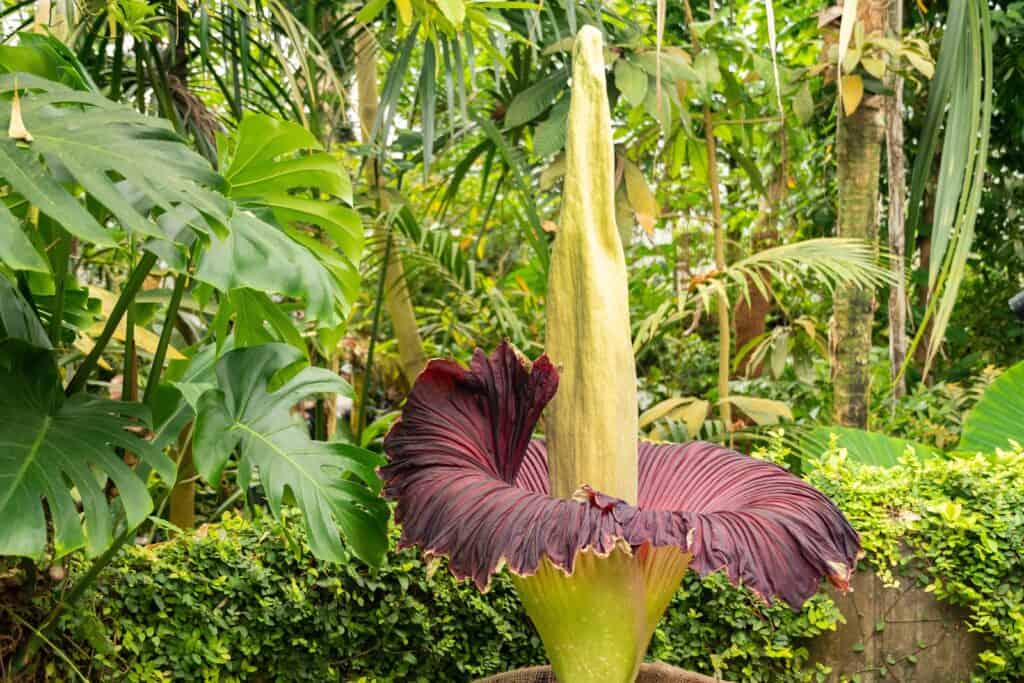
The Titan Arum, Amorphophallus titanum, is known for having the largest unbranched flower in the world, reaching up to 10 feet in height. This rare plant, found primarily in the rainforests of Sumatra, Indonesia, has a pungent odor similar to rotting flesh, earning it the nickname “corpse flower.” The odor, meant to attract pollinators like carrion beetles and flies, is an adaptation to its environment. They are notoriously difficult to cultivate outside their native habitat, and they only bloom once every few years, sometimes taking up to 10 years to flower again. When it does bloom, it lasts only for a few days, and the timing is so unpredictable that scientists have had difficulty studying the plant’s pollination process. There are fewer than 1,000 Titan Arum plants in existence globally, and they’re mostly found in botanical gardens or protected areas in their native range. Its immense size and foul smell make it a curious phenomenon for plant lovers and researchers alike. Botanists have been attempting to decode the plant’s unique pollination mechanisms, but its infrequent blooming and its remote natural habitat make it a challenge. Its rarity has also made it a subject of conservation efforts to protect its dwindling numbers in the wild.
The Welwitschia (Welwitschia mirabilis)
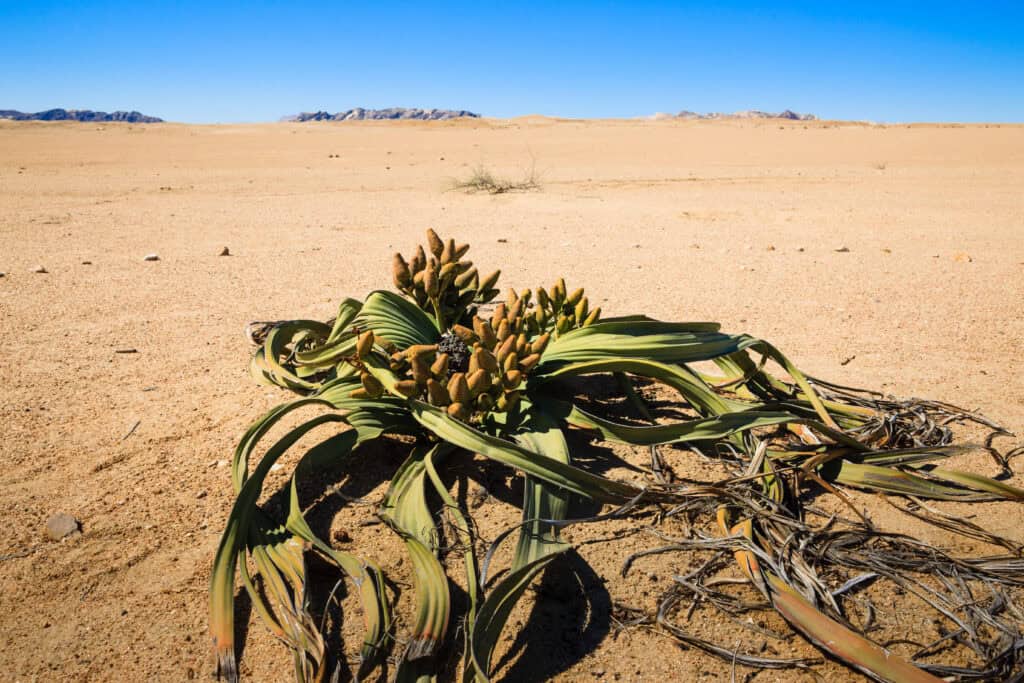
The Welwitschia, Welwitschia mirabilis, is a bizarre, ancient plant that defies conventional botanical understanding. It grows in the arid deserts of Namibia and Angola, where it has evolved to survive extreme conditions with little water. Unlike most plants, it only produces two long, strap-like leaves that continue growing throughout its lifespan, which can exceed 1,000 years. This odd structure challenges the standard expectations of plant growth, as it appears to be a plant with only two leaves, despite being a well-developed perennial. It also possesses a deep taproot that reaches far below the surface to access groundwater, another unique survival adaptation. There are fewer than 50,000 individual plants remaining in the wild, and they are highly vulnerable to climate change and human impact. Despite its strange appearance, it is an important species for understanding plant evolution in extreme environments. Recent studies suggest that its ability to survive in the desert heat might hold clues to engineering drought-resistant crops. As its population is limited, conservation efforts are focused on preserving its habitat and reducing human impact.
The Jade Vine (Strongylodon macrobotrys)
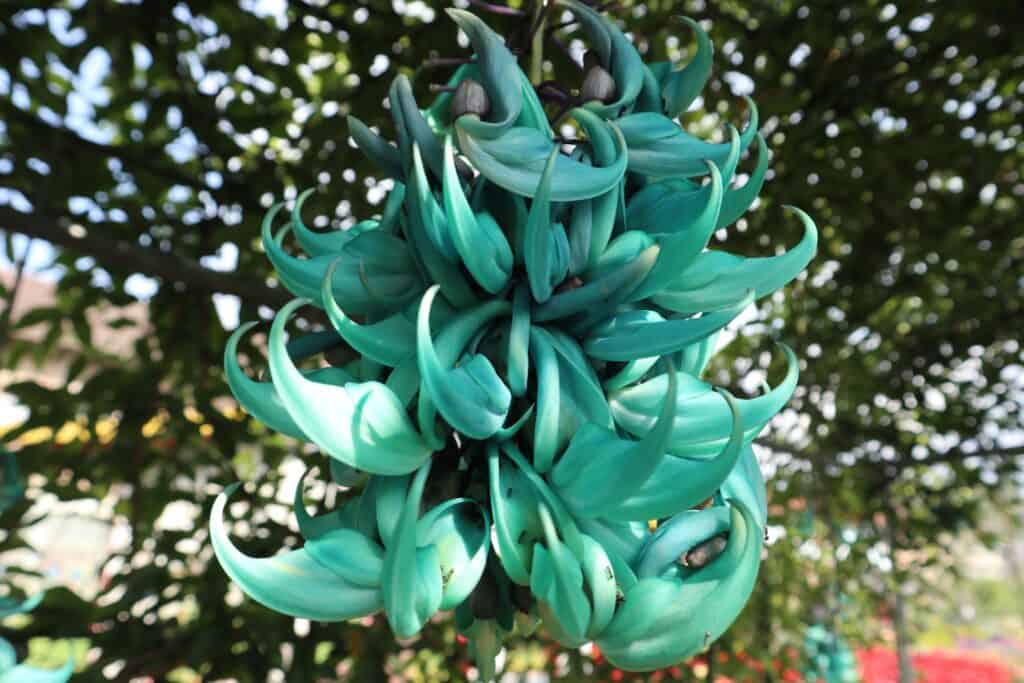
The Jade Vine, Strongylodon macrobotrys, is a rare climbing plant native to the rainforests of the Philippines. What makes it especially challenging to botanists is its unusual turquoise color, which is not commonly found in the plant kingdom. The vine’s blooms, shaped like hanging clusters of small flowers, are a striking shade of jade green and appear to glow under low light. While its beauty has made it a popular ornamental plant in gardens, it’s incredibly rare in the wild, with only a few remaining specimens in their natural habitat. It also has a specialized pollination system involving bats, specifically nectar-feeding species that are able to hover and feed from the long, tubular flowers. This specific interaction makes it difficult to cultivate outside its native range, as its pollinators are hard to replicate. Furthermore, it is difficult to propagate from seed, which adds to its rarity in cultivation. In recent years, there have been efforts to study its genetic makeup to understand how it produces its unique color. Conservationists are also attempting to protect its remaining natural habitats to prevent its extinction.
The Ghost Plant (Monotropa uniflora)
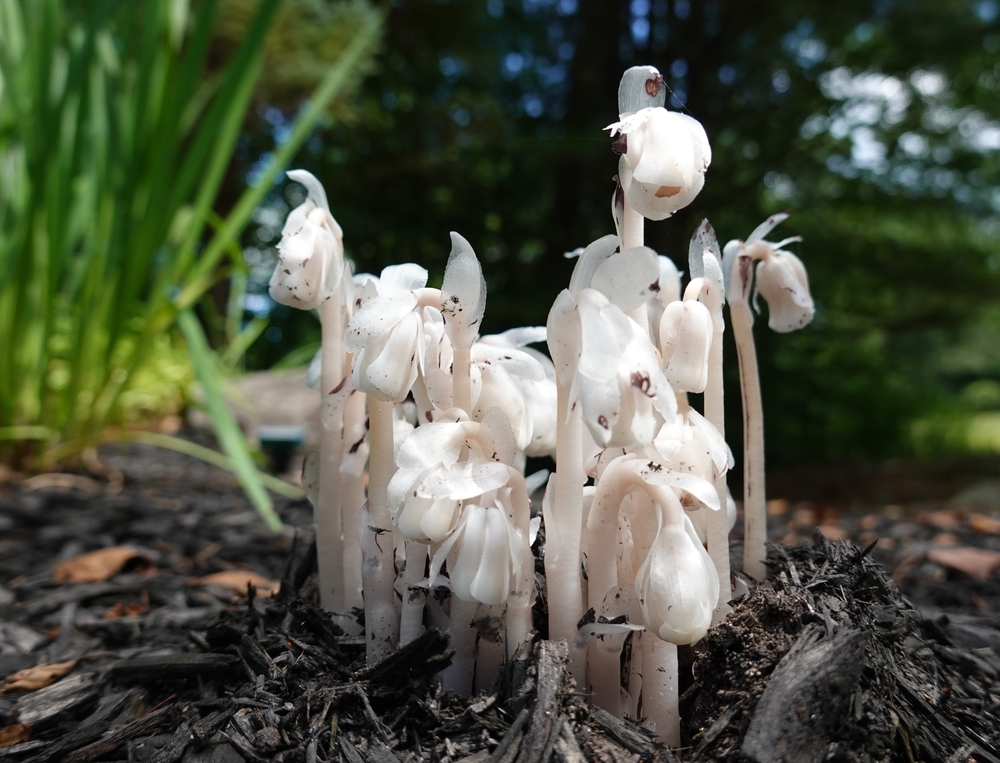
The Ghost Plant, Monotropa uniflora, is a unique and rare plant that lacks chlorophyll, making it an anomaly in the plant world. This parasitic plant feeds off mycorrhizal fungi that connect with the roots of other plants, instead of photosynthesizing like most green plants. They are typically found in temperate forests of North America and parts of Asia, where they grow in the shade of larger trees. Their striking white color, which gives them a ghostly appearance, and their tubular, bell-shaped flowers are unlike anything seen in typical plants. Its lack of chlorophyll and its parasitic nature challenged earlier botanical classification, as it didn’t fit neatly into established categories of plant life. It has a symbiotic relationship with fungi and other plant species, making it a valuable subject of research for understanding plant ecology and evolution. Despite being rare, it is not yet critically endangered, though it can be difficult to find in the wild due to its cryptic nature. Recent studies have revealed more about the relationship between the Ghost Plant and the fungi it relies on for nutrients. Researchers are also investigating its potential uses in medical science due to its unique biochemical properties.
The Franklin Tree (Franklinia alatamaha)
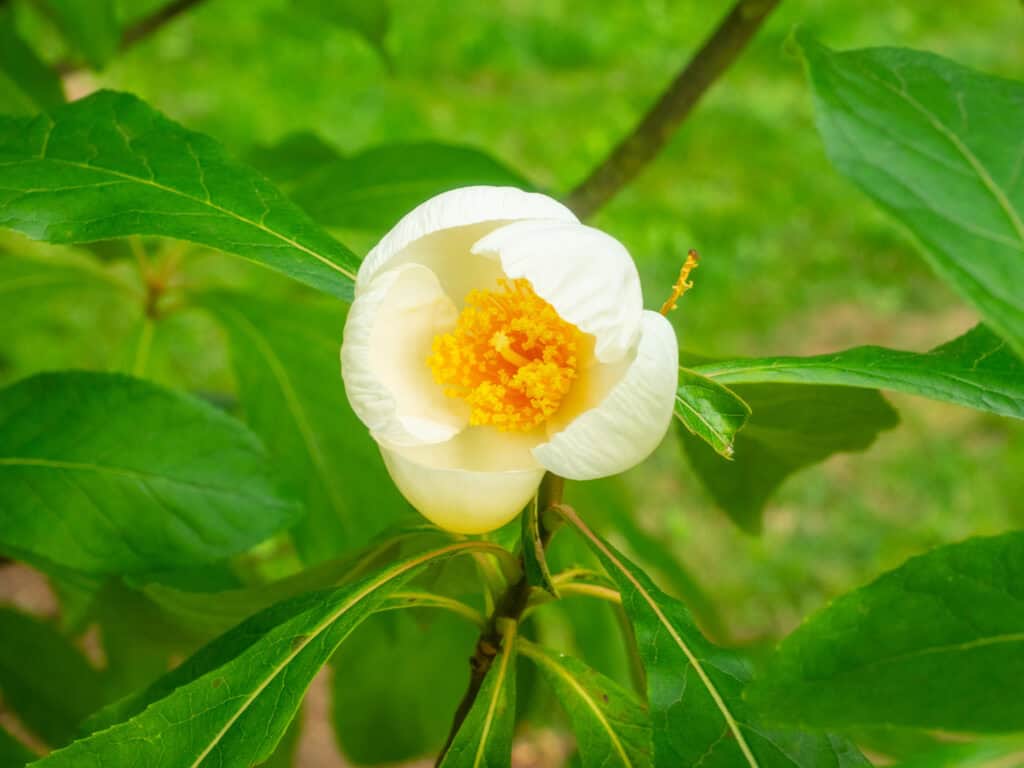
The Franklin Tree, Franklinia alatamaha, was discovered in 1765 along the Altamaha River in Georgia, USA, but is now extinct in the wild. It was once considered an extraordinary ornamental tree, with its white flowers and golden centers, but its native habitat was lost to deforestation and agricultural expansion. Despite numerous efforts to reintroduce it into its native habitat, it has not been successful due to its specific environmental needs. It was named after Benjamin Franklin and was a favorite among botanists of the 18th century, yet it was never cultivated in large numbers. Today, all remaining ones exist only in cultivation, particularly in botanical gardens and private collections. It is known for its susceptibility to blight and other diseases, which has made it even harder to grow successfully outside controlled environments. Despite its beauty, its loss in the wild remains a cautionary tale about the consequences of habitat destruction.
The Rafflesia Arnoldii (Rafflesia arnoldii)
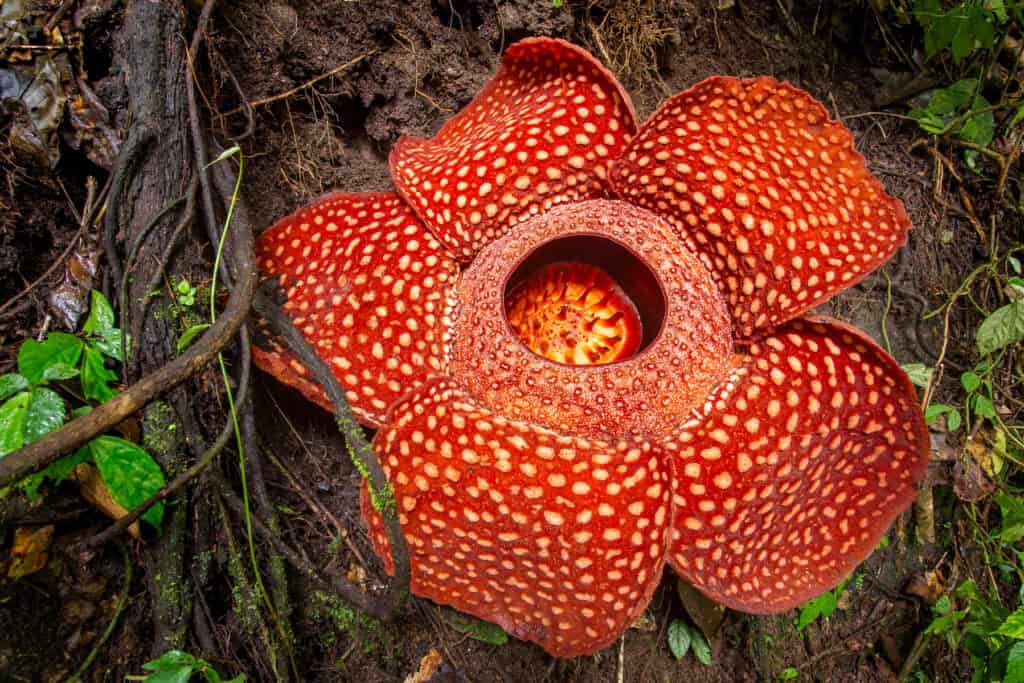
The Rafflesia Arnoldii, Rafflesia arnoldii, is notorious for producing the largest flower in the world, which can reach up to 3 feet in diameter. Native to the rainforests of Sumatra and Borneo, this giant flower is known for its pungent odor of rotting flesh, which attracts flies and carrion beetles for pollination. It is an ephemeral bloom, lasting only a few days before wilting, and it remains hidden for most of the year as the plant itself exists as a parasitic organism. The rarity of the flower, along with its unusual characteristics, has made it a subject of fascination for botanists and tourists alike. Unfortunately, it is endangered, primarily due to habitat destruction and the overharvesting of its blooms for commercial purposes. With fewer than 1,000 individuals remaining in the wild, it is now protected by conservation laws in Indonesia and Malaysia. It has become an icon of rare and endangered species, with international efforts aimed at preserving both its habitat and its unique ecological niche. Botanists are studying its complex reproductive mechanisms to better understand how to ensure its survival in the wild. There are also ongoing efforts to reintroduce the plant to areas where it has been lost.
The Victoria Amazonica (Victoria amazonica)
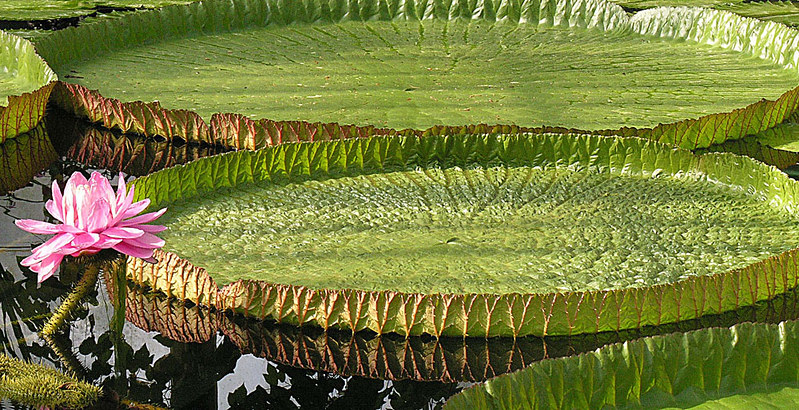
The Victoria Amazonica, Victoria amazonica, is a giant water lily native to the Amazon Basin. Known for its enormous, circular leaves that can span up to 10 feet in diameter, it has long been a subject of fascination for botanists. Its flowers are equally spectacular, opening at night and closing during the day, a phenomenon that was once thought to be mythical. The leaves are also capable of supporting the weight of a small child, due to their strong, yet flexible structure. However, the plant is increasingly rare in the wild due to deforestation and changes to the Amazon ecosystem. It is primarily found in slow-moving rivers and shallow swamps, where it plays a critical role in maintaining the local ecosystem by providing habitat for wildlife. Its remarkable size and unique flowering behavior have earned it a place in botanical history as one of the most unusual aquatic plants. Conservationists are working to protect the plant’s natural habitat, and some researchers are investigating its potential in phytoremediation. Its ability to thrive in polluted waters could provide insight into methods for cleaning water sources.
The Bat Flower (Tacca palmata)

The Bat Flower, Tacca palmata, is a striking and mysterious plant known for its dark, bat-shaped flowers with long, pendulous “whiskers” that resemble bat wings. Native to Southeast Asia and parts of the Pacific Islands, it thrives in tropical climates and grows as a perennial herb. Botanically, it challenges traditional floral shapes and forms, with its intricate, almost surreal design standing out among other plants. Its unique flower morphology is thought to be an adaptation for pollination by bats, though in some regions, it may also be pollinated by moths or beetles. While rare, it has been cultivated in tropical regions, and in some areas, it has become a symbol of good luck or protection. However, it is still not commonly found in botanical gardens due to its preference for specific growing conditions like shaded areas with high humidity. Botanists were initially puzzled by its dark coloring and unusual structure, which did not conform to typical floral designs found in other plants. Cultivating it outside its natural habitat can be challenging, as it requires precise environmental conditions, particularly high humidity and warm temperatures. Despite its striking appearance, it is somewhat misunderstood, with some people confusing it with other “bat-like” species in the Tacca genus.
The Sensitive Mimosa (Mimosa pudica)
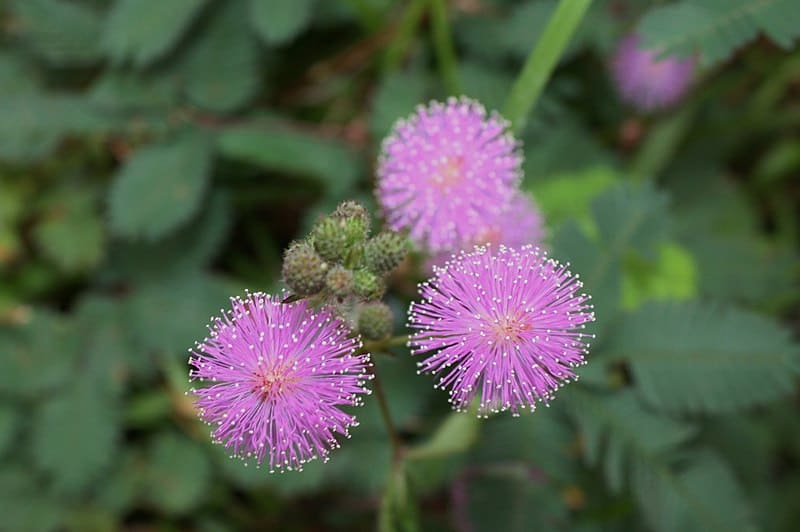
The Sensitive Mimosa, Mimosa pudica, has long captivated botanists and nature lovers alike with its remarkable ability to respond to touch. When disturbed, its delicate leaves fold up rapidly, a behavior known as “thigmonasty,” which was once thought to be a sign of advanced intelligence in plants. Native to Central and South America, it is now found in various tropical regions worldwide. Its rapid leaf movement is a defense mechanism believed to disorient herbivores and deter them from feeding. While this behavior is well-documented, the exact mechanisms behind its responsiveness remain a subject of debate among botanists, as its fast movement involves complex chemical and electrical signals within it. In addition to its remarkable motion, Mimosa pudica also produces small, spherical purple-pink flowers, which add to its allure. Its ability to exhibit such a complex response has challenged previous notions of plant behavior and intelligence. Recent studies are focused on uncovering the genetic basis of its rapid response to stimuli, offering new insights into plant communication. Some researchers speculate that Mimosa pudica may hold the key to unlocking plant reactions to environmental stressors, potentially aiding in the development of more resilient crops.
This article originally appeared on Rarest.org.
More from Rarest.org
19 Stunning Perennial Flowers That Attract Butterflies and Bees
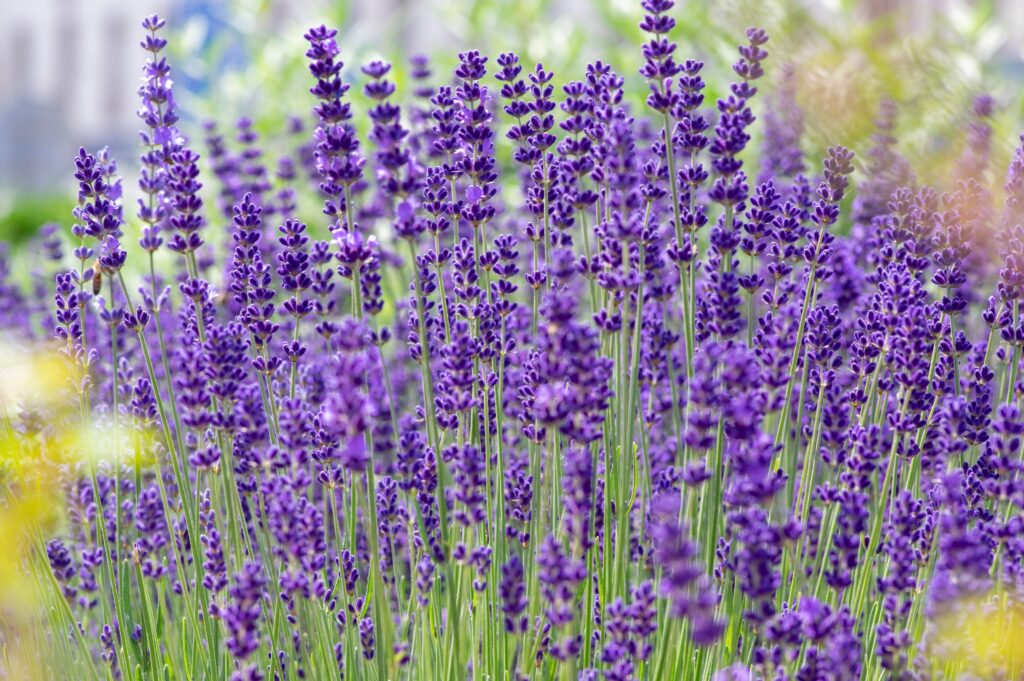
Butterflies and bees are essential pollinators, and one of the best ways to attract them is by planting beautiful perennial flowers. These plants not only add color to your garden but also support local ecosystems. Each flower on this list has a unique feature that draws in pollinators, making them a perfect addition to any outdoor space. Read More.
22 Eye-Catching Fish Species Found in Coral Reefs

Coral reefs are home to some of the most vibrant and diverse fish species in the world. These underwater ecosystems showcase a kaleidoscope of colors and fascinating behaviors that captivate anyone who visits. Read More.
15 Lesser-Known Species on the Brink of Extinction
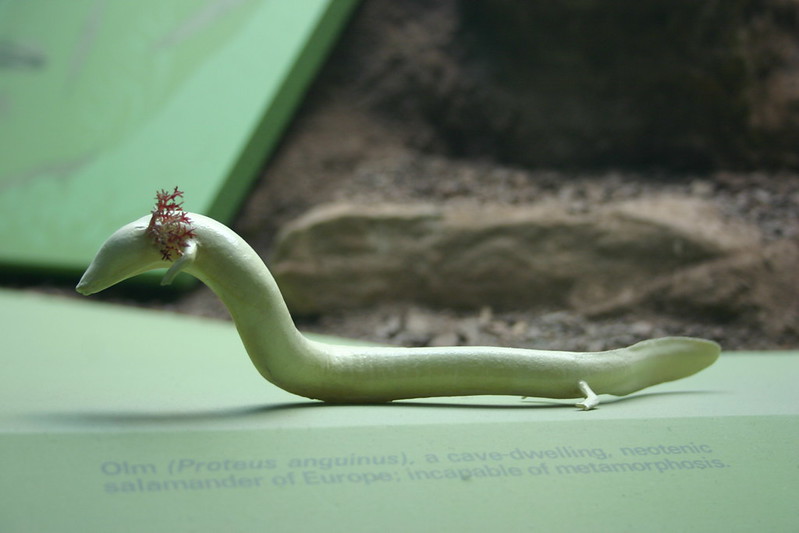
Many species around the world are facing the threat of extinction, but not all of them are well-known. While efforts to save popular animals like pandas and tigers often make headlines, lesser-known species are quietly disappearing at an alarming rate. Read More.
